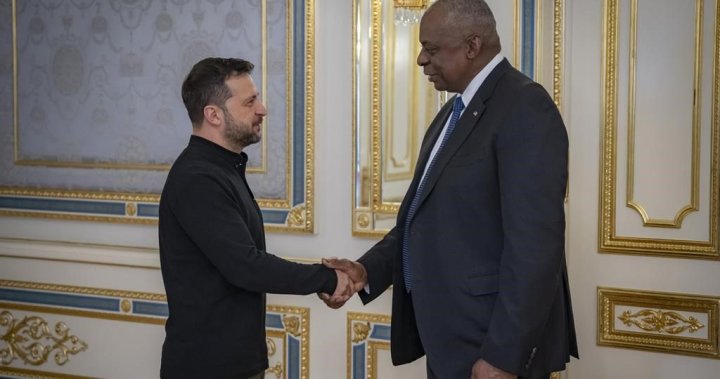Ukraine will receive $50 billion in loans, backed by frozen Russian assets, from Group of Seven allies, the White House said Wednesday. Distribution of the money will begin by year’s end, according to American officials who said the United States is providing $20 billion of the total.
Leaders of the wealthy democracies agreed earlier this year to engineer the mammoth loan to help Ukraine in its fight for survival after Russia’s invasion. Interest earned on profits from Russia’s frozen central bank assets would be used as collateral.
U.S. President Joe Biden said in a statement: “Ukraine can receive the assistance it needs now, without burdening taxpayers. These loans will support the people of Ukraine as they defend and rebuild their country. And our efforts make it clear: tyrants will be responsible for the damages they cause.”
At a ceremony Wednesday in Washington, Treasury Secretary Janet Yellen and Ukraine’s finance minister, Sergii Marchenko, put into writing assurances that the U.S. loan will be paid for by the windfall proceeds of the immobilized Russian sovereign assets, not by American taxpayer dollars.
“Letting Ukraine fall would invite further aggression by (Russian President Vladimir) Putin and jeopardize the safety of our NATO allies in Europe, who we are committed by treaty to defend,” Yellen said.

The additional $30 billion will come from the European Union, the United Kingdom, Canada and Japan, among others.

Get breaking National news
For news impacting Canada and around the world, sign up for breaking news alerts delivered directly to you when they happen.
Canada announced in June when the loan was first announced at the G7 Summit in Italy that it would contribute $5 billion to the initiative.
“To be clear, nothing like this has ever been done before,” said Daleep Singh, the U.S. deputy national security adviser on international economics. “Never before has a multilateral coalition frozen the assets of an aggressor country and then harnessed the value of those assets to fund the defense of the aggrieved party all while respecting the rule of law and maintaining solidarity.”
Singh said the Biden administration intends to divide the U.S. share of $20 billion between aiding Ukraine’s economy and military. It will require congressional action to send military aid, and Defense Secretary Lloyd Austin said that weapons and equipment being promised now can take weeks or months to get to Ukraine.
The idea of using Russia’s frozen assets to help Ukraine faced resistance at first from European officials who cited legal and financial stability concerns. The move gained momentum after more than a year of negotiations between finance officials and after Biden in April signed legislation that allowed the government to seize the roughly $5 billion in Russian state assets in the U.S.
The G7 announced in June that most of the loan would be backed by profits being earned on roughly $260 billion in immobilized Russian assets. The vast majority of that money is held in EU nations.
The U.S. and its allies immediately froze whatever Russian central bank assets they had access to when Moscow invaded Ukraine in 2022.

The timing of the loan’s disbursement has been called into question, coming about two weeks before the presidential election between Republican Donald Trump and Democrat Kamala Harris. The candidates have taken opposing views on the threat from Russia.
Defense Secretary Lloyd Austin dismissed suggestions that military aid to Ukraine approved by the Biden administration now could be negated by any new team in office.
“I think we’re pretty sure that these materials will continue to flow,” Austin said, adding that he is confident it all will be delivered “on the timeline that we’ve outlined.”
However, Austin also made it clear that the Biden administration is not wavering in its opposition to giving Ukraine the authority to use U.S.-provided ATACM missiles to strike deep into Russia.
He said the latest infusion of about $800 million in long-term assistance will fund Ukraine’s production of drones that can strike farther than the ATACMS, which have a range of about 300 kilometers (185 miles).
The World Bank’s latest damage assessment of Ukraine, released in February, estimates that costs for reconstruction and recovery stand at $486 billion over the next 10 years.
Associated Press writer Lolita C. Baldor contributed to this report. Additional files from Global News
© 2024 The Canadian Press




